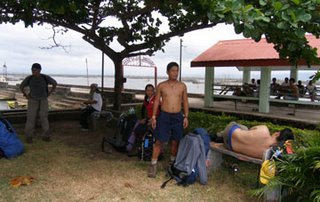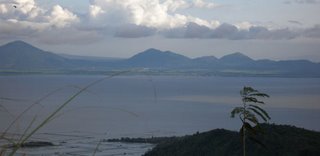
Dear Pamangkins, a book featuring a compilation of personal letters of the late Tita Nette (Dra. Josefina Bautista Magno) to her pamangkins was launched at the Dec 2006 Bautista family reunion.
Quoting from the introduction written by the eldest of the pamangkins Tish S. Bautista, "The letters are an amazing record of her meditations on God’s love for us. Over and over, we read from her letters how God knows what we need and how He takes care of even the smallest detail. We read of how all of us are called to holiness, and how the path to holiness can be through Opus Dei or Couples for Christ or some other way. We are given simple examples of kindness that the pamangkins can emulate. There is the gentle cajoling for the pamangkins to receive the sacraments of Confession and the Eucharist."
I am sharing a letter Tita Nette wrote in February 1999.
Thursday, 11 February 1999 09:59:17
Re: Seize the Moment
Dear Pamangkins,
I get very frustrated with this electronic age because aside from my inborn lack of talent for anything mechanical, I now have to deal with a server, to connect, and to send, which drives me crazy. First, I could not connect, then when I finally could connect, the laptop wouldn't send my queued messages because I think I punched a button which I shouldn't have and it froze the whole system. I had to call the technician to set things moving again. Now I cannot connect again, so I decided to write anyway and hopefully this message will find its way to you sometime.
I was at a small gathering in a friend's house the other night and I listened to a talk on Seize the Moment. The speaker, Joe Itchon, is visiting for a few days on business -- the usual credentials -- Harvard, big corporation, etc. and Opus Dei in addition. The theme of his impromptu talk was that we should not look at the past, it is gone forever, except if we have learned some lessons from it; we should not dwell on the future because it may not even be there. We should dwell in the moment now, because it is this moment which God has destined for us in a Divine Master Plan. He likened life to a symphony, where there are many, many instruments, all of them playing music. The music is composed of many, many notes, but each note has to be played by a particular instrument at a particular moment, in order to contribute to the symphony. If it is played at the wrong moment, it creates a discordant note and the symphony is ruined.
Our lives are part of a symphony and each one of us has a role to play. And our lives are made up of many moments, each moment having its own purpose. Each moment is very important and if we let it pass, it will be gone forever.
I like the message because it is a reminder that whatever we are doing now is an opportunity for us to be the "light of the world and salt of the earth." Each moment can be a nugget of gold that can be deposited as a treasure in heaven.
Love to all of you, Tita Nette
-------------------------------------------
Thursday, 06 Jul 2000 08:50:23 +0800
Subject:
Daily work
Dear
Pamangkins:
Last
night, I read a quotation from Blessed Josemaria, Founder of Opus Dei, which
impressed me. He writes: "Sanctifying
one's work is no fantastic dream but the mission of every Christian--yours and
mine. That is what that lathe-worker had
discovered, when he said, 'I am overwhelmed with happiness when I think how
true it is that while I am working at the lathe and singing--singing all the
time, on the outside and on the inside--I can become a saint. How good God is!"
We
may not be lathe workers, but all of us have jobs which very often we find
monotonous and boring or even a big burden, or we may not have a job at all and
all we have are the daily tasks and chores in the home. But it is in these "lathes" that we
have that we are given the opportunity to find God and become saints by merely
doing all that we have to do with love, and offering all of them to God, so He
can sanctify them and us in the process.
And so we can sing with joy because just by doing our work, simple as a clerk's
or challenging as an executive's, we are really becoming saints. We are converting "the ordinary prose of
life to beautiful poetry". It is
Opus Dei.
Love
to you all,
Tita
Nette
---------------------------The book with a subtitle Letters on Life and Spirituality is not available in bookstores in Manila. If you wish to get a copy, write to me at tochs@excite.com







































